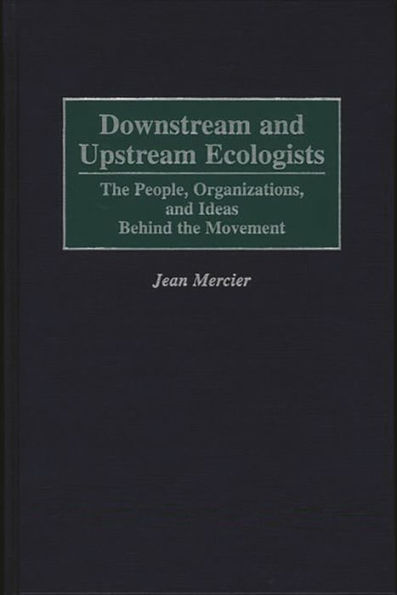Home
Downstream and Upstream Ecologists: The People, Organizations, and Ideas Behind the Movement
Loading Inventory...
Barnes and Noble
Downstream and Upstream Ecologists: The People, Organizations, and Ideas Behind the Movement
Current price: $95.00


Barnes and Noble
Downstream and Upstream Ecologists: The People, Organizations, and Ideas Behind the Movement
Current price: $95.00
Loading Inventory...
Size: OS
*Product Information may vary - to confirm product availability, pricing, and additional information please contact Barnes and Noble
Mercier looks at the environmental movement from an in-depth international perspective and seeks to analyze the spectrum of positions taken. He shows how the movement is an enduring one, and he demonstrates how it is intimately related to the development of media and to fundamental social and institutional trends of our time. Although environmentalists and sociologists have an often bewildering variety of positions and theories, some being incompatible with others, they share commom values. Mercier offers the image of the protoplasm, the viscous matter that surrounds the living cell, as a metaphor to explore these values.
Although environmentalists and ecologists all over the globe share certain basic goals—less consumption, less waste, less energy use—there is a bewildering variety of ideas, concepts, and theories, some incompatible with others, that is associated with the movement. Indeed, one might more accurately think of a series of movements rather than one movement.
Mercier divides the movement into downstream ecologists—sometimes called environmentalists—who are essentially concerned about the quality of the air, the water, and the soil, and the upstream ecologists, who essentially believe that the deterioration of the quality of the air, water, and soil is a symptom of some larger (upstream) phenomenon. The upstream ecologists, in turban, are divided into subgroups, among them the Social Ecologists, who are the inheritors of the traditional positions of the left, and the Deep Ecologists, who attribute the state of the environment to a modern, excessively specialized and segmented outlook that eventually leads to a loss of sensitivity and a disregard for nature and our environment. Using the image of the protoplasm, the viscous matter that contains the living cell, Mercier concludes by relating these and other patterns to a postmodern aesthetic which, itself, is strongly influenced by our changing communication environment. A major analysis that will be of importance to policymakers, scholars, and researchers involved with environmental issues and contemporary social patterns that go beyond the environment per se.


















